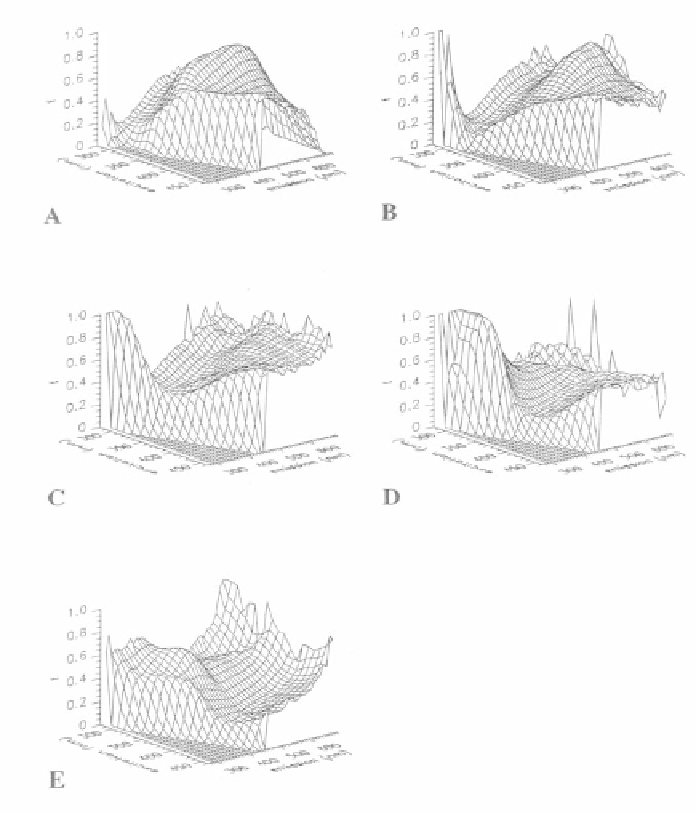Environmental Engineering Reference
In-Depth Information
The availability of a complete and consistent set of experiments devoted to the
loss of the optical properties of CDOM in the UV-visible range becomes an important
issue in order to estimate the CDOM photobleaching rates in the field. Several
laboratory studies are now available on CDOM photobleaching. Exposure of CDOM to
different monochromatic light sources induces loss of its fluorescence signal
(Figure 7)
49,69-72
as well as its absorption signal with an efficiency that is largest at the
irradiation wavelength and that decreases with increasing wavelength
49
.
Figure 7.
Fraction of the original fluorescence intensity (
f
) remaining after monochromatic
irradiation of SRFA at 296 nm (Fig. A; t=83 hr; E=5.53·10
+15
photons cm
-2
s
-1
), at 313 nm (Fig. B;
t=83 hr; E=12.67·10
+15
photons cm
-2
s
-1
), at 334 nm (Fig. C; t=185 hr; E=4.63·10
+15
photons cm
-2
s
-1
),
at 366 nm (Fig. D; t=103 hr; E=11.92·10
+15
photons cm
-2
s
-1
) and at 407 nm (Fig. E; t=233 hr;
E=5.43·10
+15
photons cm
-2
s
-1
). The
f
is defined as the ratio of the EEMS at irradiation time t to the
EEMS at time zero.



Search WWH ::

Custom Search